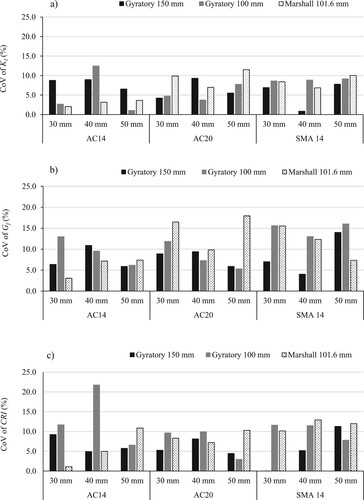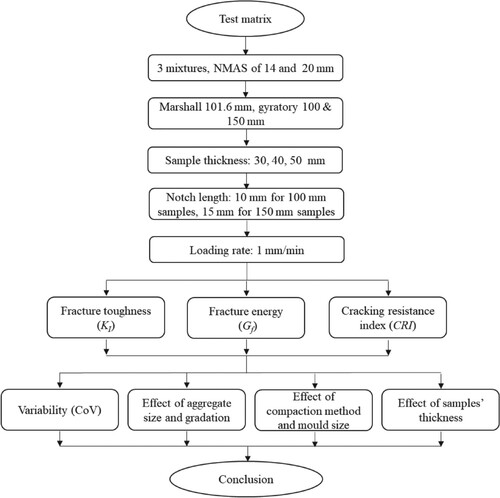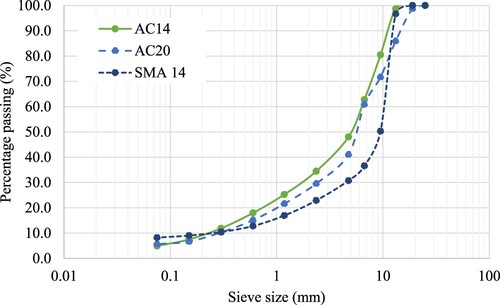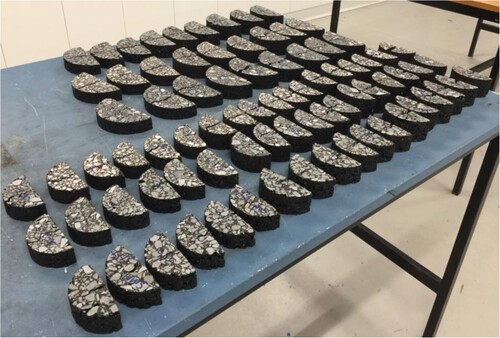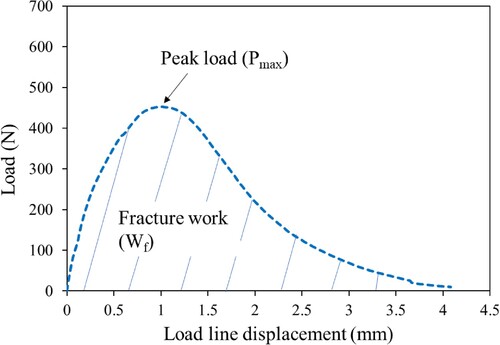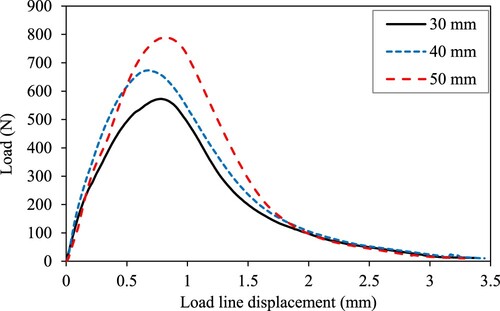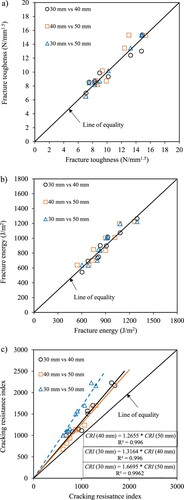Figures & data
Table 1. Basic properties of the binders.
Figure 3. Sample preparation illustration for the SCB test from cylindrical compacted samples either from the gyratory compactor or Marshall compactor.

Figure 5. Testing scheme of the SCB test and sample dimension explanation: a) front view, b) side view
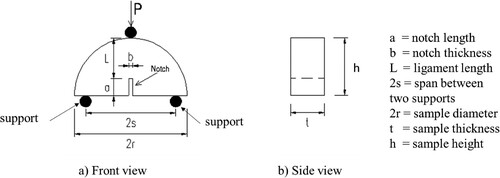
Figure 7. Typical load–displacement curves of SCB test samples of different asphalt mixes at a typical thickness of 30 mm.
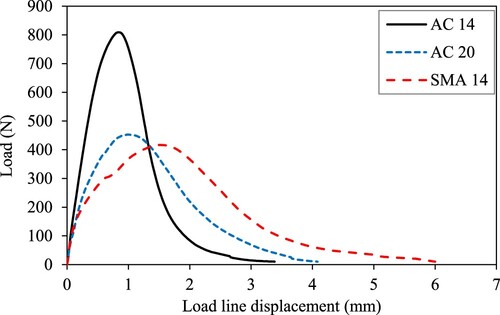
Figure 9. Typical load–displacement curves of SCB test samples of different compaction methods and diameters.

Figure 10. Repeatability of the SCB test results measured by the coefficient of variation of (a) KI, (b) Gf, and (c) CRI for three different thickness of 30, 40, and 50 mm samples.
